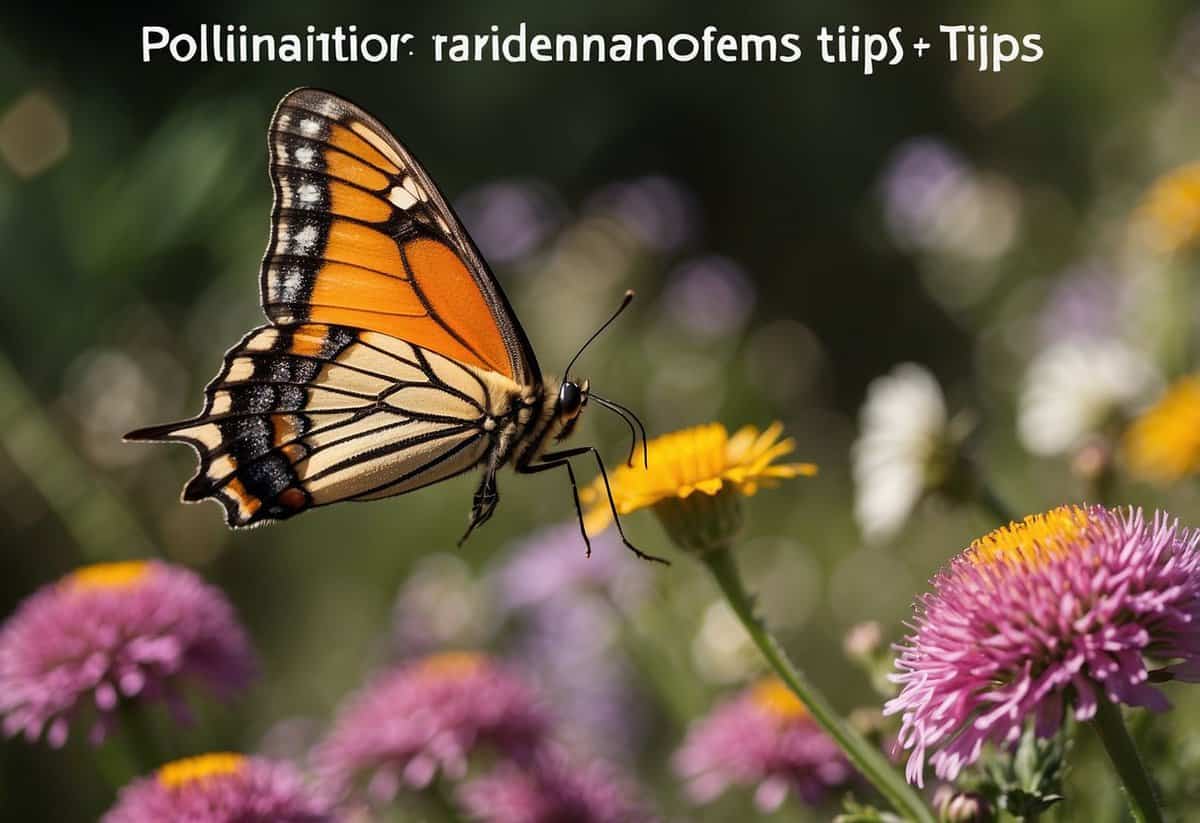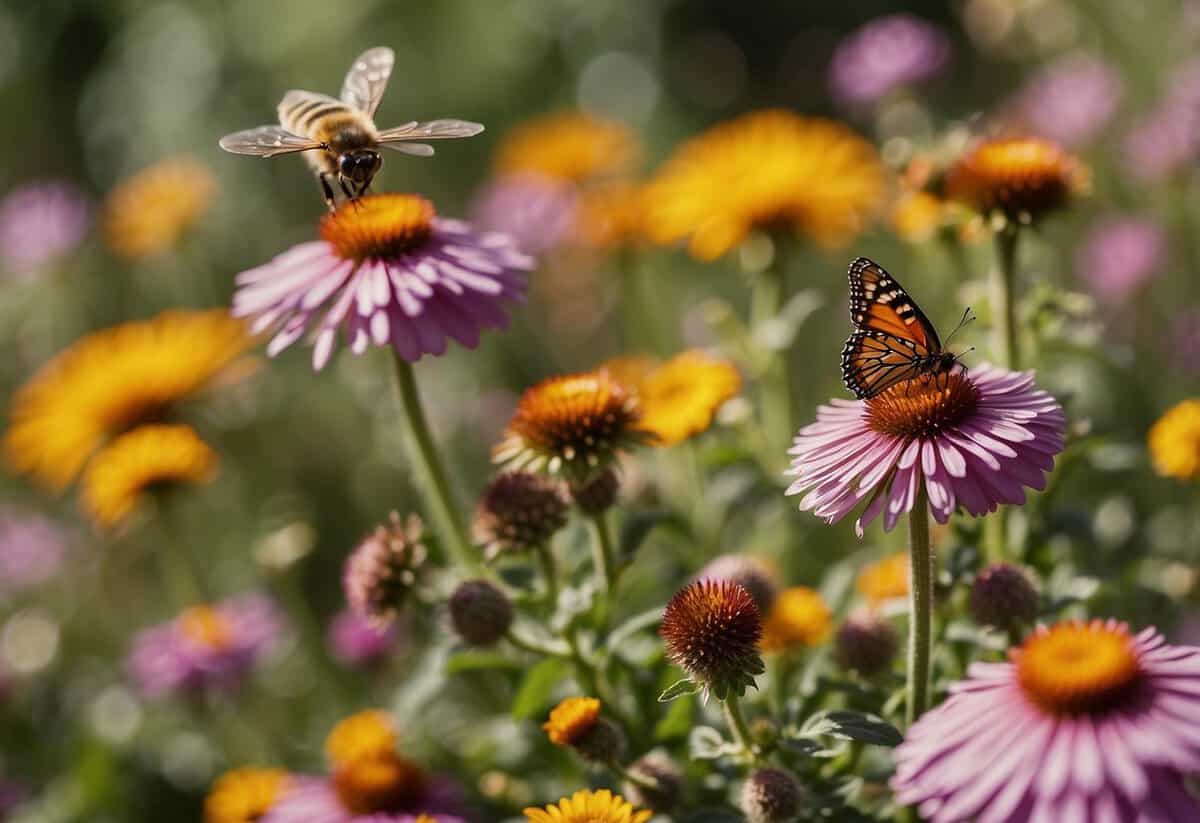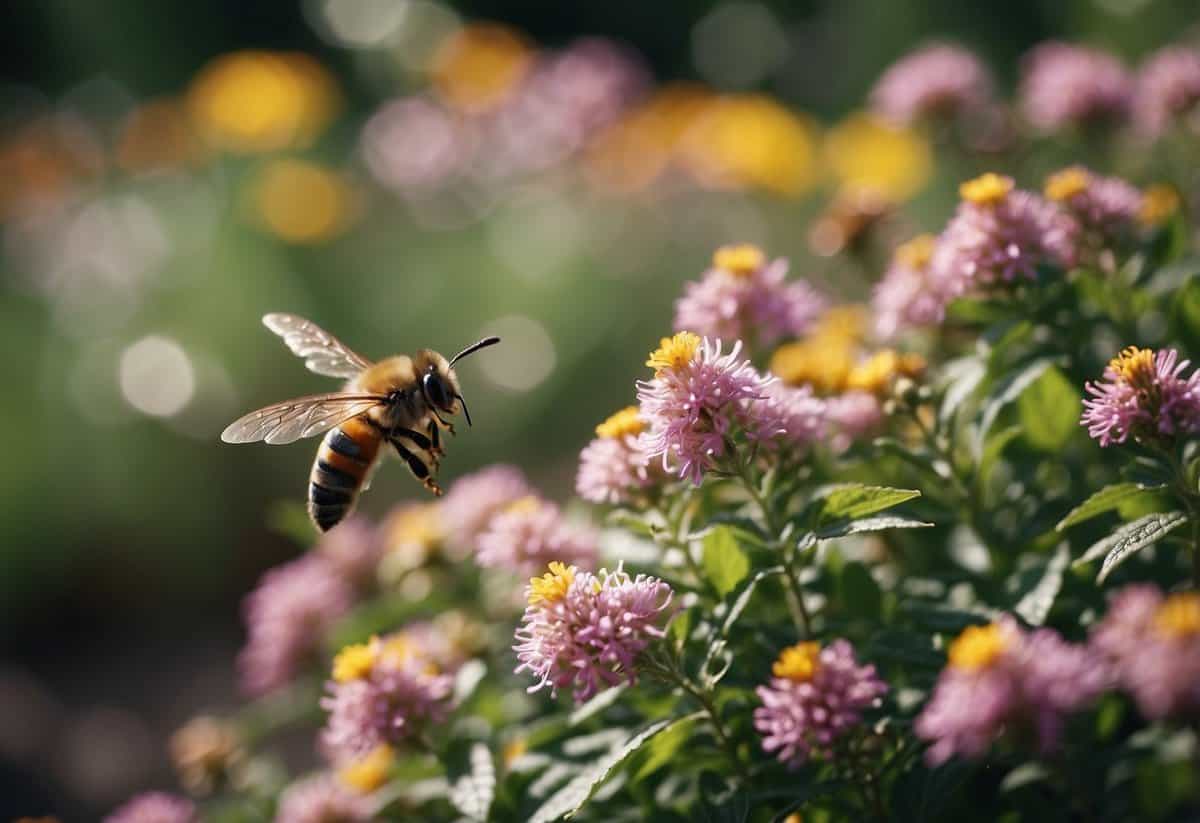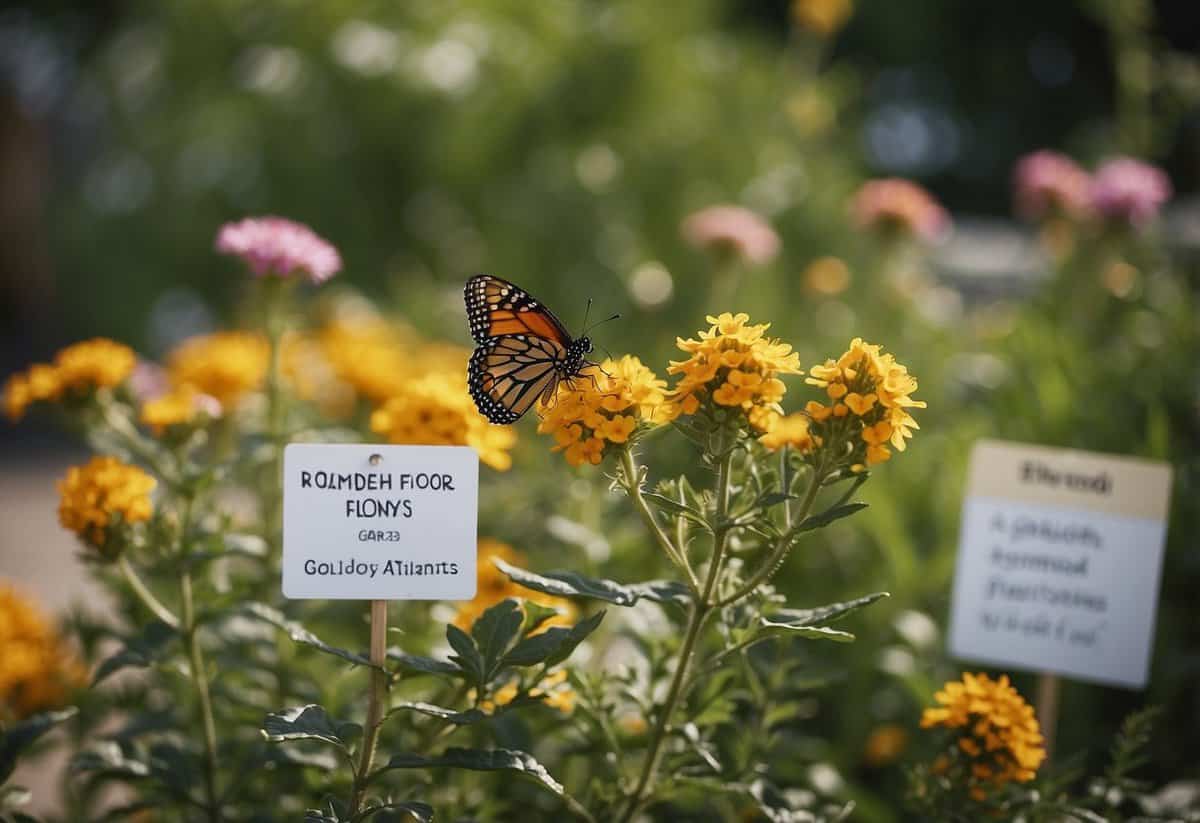Pollinator Garden Tips: Easy Ways to Attract Bees and Butterflies
Creating a pollinator garden is a fantastic way to boost your local environment while enjoying the beauty of nature. Pollinators like bees, butterflies, and birds play a crucial role in helping plants reproduce, which in turn supports a healthy ecosystem. By following some simple tips, you can design a garden that attracts and supports these essential creatures.

Whether you’re a gardening novice or a seasoned pro, there are always new things to learn about encouraging pollinators. You don’t need a lot of space or expensive plants to make a big impact. Focusing on the right plant choices and garden care can make all the difference in creating a thriving habitat for pollinators.
1) Plant native flowers

Native flowers are key to a thriving pollinator garden. These plants naturally belong in your region, making them easy to grow and maintain.
Choosing native plants means less work for you since they’re already adapted to your local climate and soil. They support the insects and birds that have evolved with them, creating a balanced ecosystem.
Native flowers, like goldenrod, coneflowers, and milkweed, attract local pollinators. This helps ensure a buzzing, colorful garden. For more details on native plants, visit this guide on native plants for a pollinator garden.
2) Create Nesting Habitats

To attract pollinators, you should create places where they can nest. Use dead wood, branches, and leaves to make small piles in your garden. These provide homes for bees and other insects.
Leave some bare soil patches. Ground-nesting bees prefer open soil for burrowing. Avoid using too much mulch in these areas.
Consider adding nesting boxes. These can be great for bees who need a bit more shelter.
3) Avoid Pesticides

Using pesticides can harm essential pollinators like bees and butterflies. These chemicals can kill or weaken these insects, reducing their ability to pollinate your garden.
Instead, try natural alternatives. For instance, planting a variety of flowers can attract beneficial insects that prey on pests.
A healthy garden with diverse plants can often manage pest issues on its own. Keeping your garden chemical-free helps ensure a thriving environment for pollinators. For more details, you can visit this pollinator-friendly garden guide.
4) Install a birdbath

Adding a birdbath can help attract pollinators like bees and butterflies. They need a place to rest and drink water.
Choose a shallow birdbath and place small rocks inside. This gives pollinators a safe spot to land.
Keep the water clean and fresh. Change it regularly to prevent harmful bacteria and algae.
5) Provide Water Sources

Pollinators need water to drink and cool off. You can place shallow dishes or saucers filled with clean water in your garden. Add pebbles or floating plants to help them land safely.
Birdbaths are another good option. Make sure to replace the water regularly. This keeps it clean and prevents mosquitos.
Small ponds or water features with shallow edges are also helpful. Insects can perch on rocks or shallow borders.
6) Add diverse plants

Diverse plants attract a variety of pollinators to your garden. Try including tubular flowers for hummingbirds. Butterflies love clusters of small flowers.
Yellow flowers are a favorite for bees. Each type of pollinator has its own preferences. By planting a range of flowers, you create a friendly habitat for all sorts of pollinators.
7) Include Flowering Shrubs

Adding flowering shrubs to your pollinator garden can really boost its appeal. Not only do they add structure and beauty, but they provide food for various pollinators.
Consider planting American Beautyberry for its stunning pink summer blooms.
Another great option is the Blue Mist Shrub, which flowers from late summer through fall and attracts bees and butterflies.
Incorporating these shrubs will ensure that your garden supports pollinators throughout the growing season.
8) Avoid hybrid plants

Hybrid plants, especially those with double flowers, can be less helpful to pollinators.
These plants often lack the nectar and pollen that pollinators need.
Plant breeders sometimes sacrifice the fragrance and essential nutrients to achieve a specific look.
Stick to native and non-hybrid plants to ensure a pollinator-friendly garden.
Native plants are adapted to your area and provide better resources for local pollinators.
9) Plant in Clusters

Planting in clusters helps attract more pollinators. When you group your flowers together, it’s easier for bees, butterflies, and birds to find them.
Clusters also create a more vibrant and appealing garden. It mimics how plants grow in the wild, making your garden not only beautiful but also functional for pollinators.
10) Use Organic Mulch

Using organic mulch in your garden is a great way to attract pollinators. It offers a natural surface for them to land on while they gather nectar and pollen.
Organic mulch, like wood chips or straw, helps keep the soil moist and healthy. It also supports beneficial microbes that create a better environment for plants and pollinators to thrive.
By using organic mulch, you also reduce the need for synthetic chemicals. This keeps your garden natural and safe for all the creatures visiting your plants.
Choosing the Right Plants

Picking the right plants is crucial for a successful pollinator garden. It’s important to choose native plants and consider their blooming seasons to ensure continuous food sources for pollinators.
Native Plants
Native plants are essential for attracting and supporting local pollinators. These plants and the insects that pollinate them have evolved together, creating a balanced ecosystem. By planting native species, you’ll help local pollinators thrive.
Native plants are also well adapted to your local climate and soil, which means they often require less water and maintenance. They are more resistant to local pests and diseases, making them a sustainable choice.
Local nurseries and extension services can guide you in choosing the best native plants for your area. Examples of native plants include coneflowers, milkweeds, and bee balm.
Flowering Seasons
To keep pollinators coming to your garden, plant a variety of species that bloom at different times of the year. This ensures that there is always food available, from early spring to late fall.
Plan your garden to include early bloomers like crocuses and late bloomers like aster. In between, you can have plants like lavender, sunflowers, and zinnias. This succession of blooms will provide a continuous nectar and pollen supply.
Deadheading, or removing spent flowers, can also extend the blooming season of many plants. This practice encourages some plants to produce more flowers, keeping your garden attractive to pollinators for a longer period.
By planning for different flowering seasons, you’ll support the diverse needs of various pollinators, including bees, butterflies, and hummingbirds.
Creating a Habitat

Creating a pollinator-friendly habitat involves two key elements: providing shelter and ensuring a consistent water source. These will help support bees, butterflies, and other beneficial insects throughout the year.
Providing Shelter
Shelter is crucial for pollinators to rest, nest, and hide from predators. Consider planting dense shrubs and native plants to offer hiding spots and nesting areas. For example, bushes like willow and hawthorn provide excellent cover.
Leave parts of your lawn unmowed to create natural habitats. Tall grass and leaf piles can be essential for some insects to thrive. You can also use bee hotels or create cavity nests using wood, bamboo, or drilled holes in logs.
Butterflies, on the other hand, benefit significantly from sunny spots. Placing flat stones in your garden gives them a place to warm up their wings. Having a mix of open areas and shaded spots ensures a comfortable environment for various species.
Water Sources
Providing water is vital for pollinators to stay hydrated. A simple way to do this is by filling a shallow birdbath with gravel. The stones offer a place for insects to land and drink safely without drowning. Adding a few floating cork pieces can also help.
Creating a muddy patch in a corner of your yard is another effective method. Butterflies and bees often use these for drinking and extracting minerals. Regularly check and maintain these water sources to keep them clean and inviting.
Additionally, consider installing a nectar feeder to attract hummingbirds. Fill it with a sugar-water solution to keep them nourished. Placing feeders near blooming plants can enhance the appeal for these tiny birds.
Pesticide-Free Practices

Creating a pollinator-friendly garden without pesticides is both achievable and beneficial. Here are some simple tips to help you get started:
Go Pesticide-Free
Your garden can thrive without harmful chemicals. By avoiding pesticides, you protect bees, butterflies, and other helpful insects.
Natural Pest Control
Instead of chemicals, try natural methods to keep pests in check. Encourage beneficial insects like ladybugs and lacewings, which eat harmful pests. Plant flowers like dill and yarrow to attract these helpful bugs.
Integrated Pest Management (IPM)
Another effective strategy is Integrated Pest Management. This involves closely monitoring your garden for pests and using targeted methods to control them. Use pesticides only when absolutely necessary, and only those less harmful to pollinators.
Timing Matters
If you must use pesticides, apply them when pollinators are less active, such as at dawn or dusk. Avoid applying pesticides when plants are in bloom because that’s when pollinators are most likely to visit.
| Action | Benefit |
|---|---|
| Go pesticide-free | Protects beneficial insects |
| Encourage beneficial bugs | Naturally controls pests |
| Use Integrated Pest Mgmt | Targets pests with less harm |
| Time pesticide use | Reduces risk to pollinators |
By following these tips, you create a healthy, vibrant garden that supports pollinators. For more detailed advice, check out this ultimate guide.







